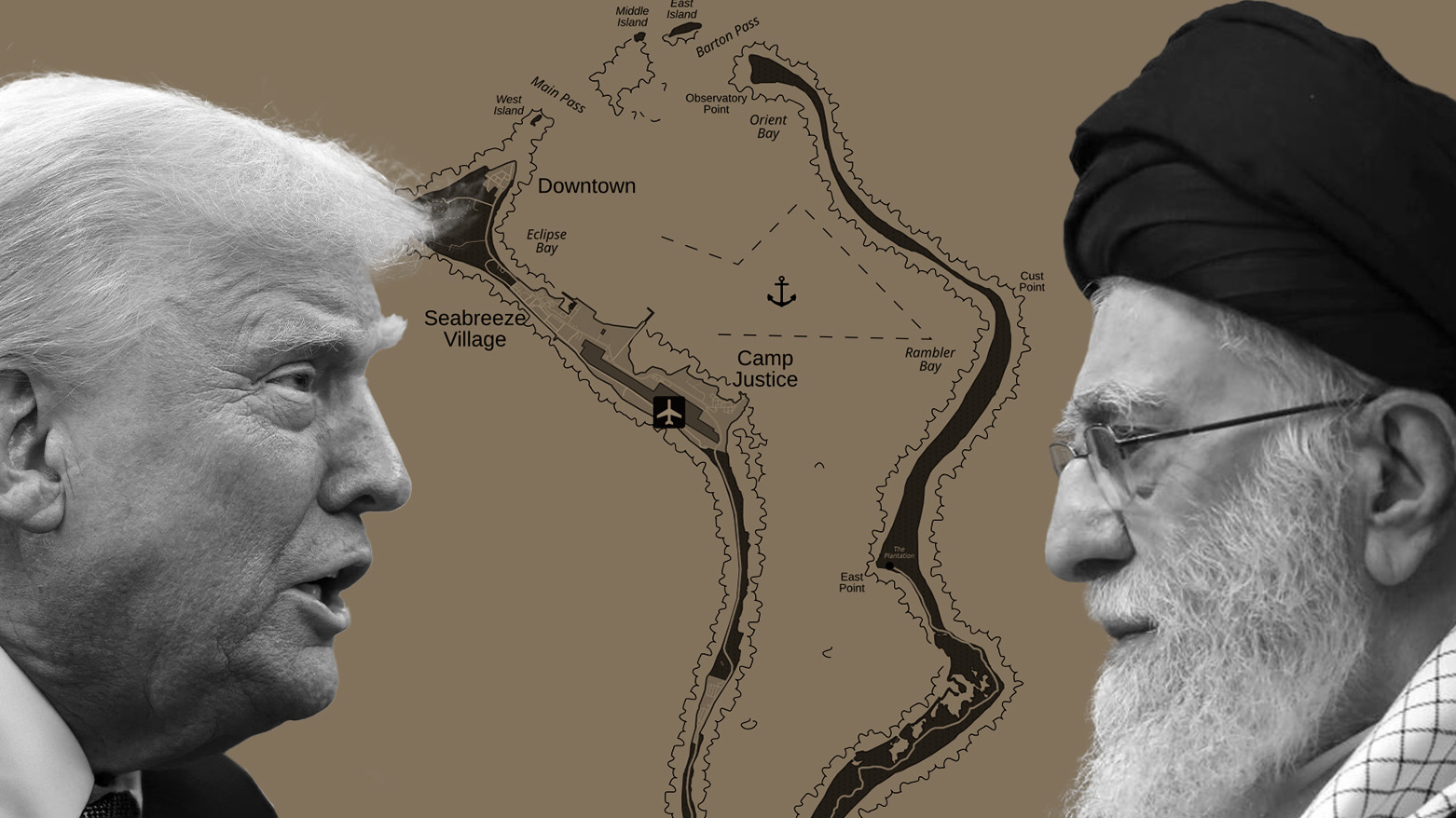Tehran Warns: Diego Garcia ‘In Crosshairs’ If U.S. Strikes
“There will be no distinction in targeting British or American forces if Iran is attacked from any base in the region or within the range of Iranian missiles,” a senior Iranian military official told The Telegraph.

By Kamaran Aziz
ERBIL (Kurdistan24) — Tensions between Iran and the West have reached a new flashpoint as Tehran warned that it would target the joint UK-US naval base on Diego Garcia in the Chagos Islands should U.S. President Donald Trump order military action against the Islamic Republic.
According to a detailed report by The Telegraph, a senior Iranian military official issued the warning amid rising fears of renewed conflict in the region.
In a rare and provocative statement, the Iranian official made clear that Tehran would not differentiate between British and American personnel or military assets if its territory were attacked. “There will be no distinction in targeting British or American forces if Iran is attacked from any base in the region or within the range of Iranian missiles,” he told The Telegraph.
He added: “When the time comes, it won’t matter whether you’re an American, British, or Turkish soldier – you will be targeted if your base is used by Americans.”
Iranian state media amplified the warning, declaring that any U.S. “hostile action” would be met with direct retaliation against Diego Garcia, a strategically critical installation that has served as a launchpad for American bombers and surveillance missions since the 1970s. Tehran specified its intent to use ballistic missiles and long-range suicide drones, including the upgraded Khorramshahr missile and the Shahed-136B drone, which has a striking range of 4,000 kilometers.
The report noted that at least three U.S. B-2 Spirit bombers—stealth aircraft capable of deep penetration strikes—were recently deployed to the Diego Garcia base, further heightening Iran’s alarm over a possible American offensive. Iranian officials described the base as “in the crosshairs,” citing its role in enabling strikes on underground facilities in Iran.
A UK government spokesperson responded firmly to the threat, stating: “We condemn these threats in the strongest terms. The UK Government continues to work with partners across the region to encourage de-escalation. The base on Diego Garcia is vital to UK and US security and plays a crucial role in maintaining regional and international security.”
The base hosts around 4,000 personnel, including U.S. service members and contractors, as well as a small British detachment that includes police, customs officers, and Royal Marines tasked with security. While the UK has committed to transferring sovereignty of the Chagos Islands to Mauritius, the arrangement includes a £90 million leaseback of Diego Garcia to ensure continued military operations.
Iran’s threat comes amid renewed pressure from Donald Trump, who has revived his “maximum pressure” policy in hopes of forcing Iran into a new nuclear deal. The US President has been vocal in his warnings to Tehran, recently stating: “Very bad things will happen to Iran” if the regime fails to return to the negotiating table.
“I don’t want that to happen,” Trump added in a public statement. “My big preference is we work it out with Iran. But if we don’t work it out, bad, bad things are going to happen.” He confirmed sending a letter to Ayatollah Ali Khamenei, Iran’s supreme leader, urging renewed diplomacy.
While direct talks remain off the table—Khamenei has categorically banned negotiations with the U.S.—Tehran’s leadership has not entirely ruled out indirect discussions. Kamal Kharazi, a senior adviser to Khamenei, was cited by the Telegraph acknowledging the potential for indirect diplomacy. Iran’s foreign minister Abbas Araghchi confirmed that a response to Trump’s letter had been sent via Oman, outlining Iran’s position on nuclear negotiations and regional affairs.
According to The Telegraph, analysts within Iran view the situation as existential. “They [the regime] would do anything to survive in the event of an attack,” one political science professor near Tehran told the newspaper. He added that Iranian leaders feel isolated and doubt that allies like Russia or China would intervene decisively in their defense.
The professor also highlighted lingering memories of Syria’s civil war and Bashar al-Assad’s initial international isolation. “The memory of Assad’s fate still lives here. The regime knows its only option is to engage and negotiate with Trump. They don’t have good memories of him and know that when he makes a promise, he follows through.”
Meanwhile, Iranian state media has expanded its list of potential retaliatory targets to include other U.S. installations in Bahrain and across the wider Middle East. The inclusion of Diego Garcia in that list significantly raises the stakes, given the island’s remote location and its key role in Anglo-American military coordination.
As diplomatic tensions tighten and military rhetoric escalates, the region faces a familiar but dangerous crossroads. The next steps by Washington and Tehran could either open a new channel for indirect diplomacy or spark a broader confrontation that could quickly spiral beyond control. As The Telegraph underscores, the threat to Diego Garcia is more than symbolic—it represents a calculated warning at the heart of Western strategic power in the Indian Ocean.
